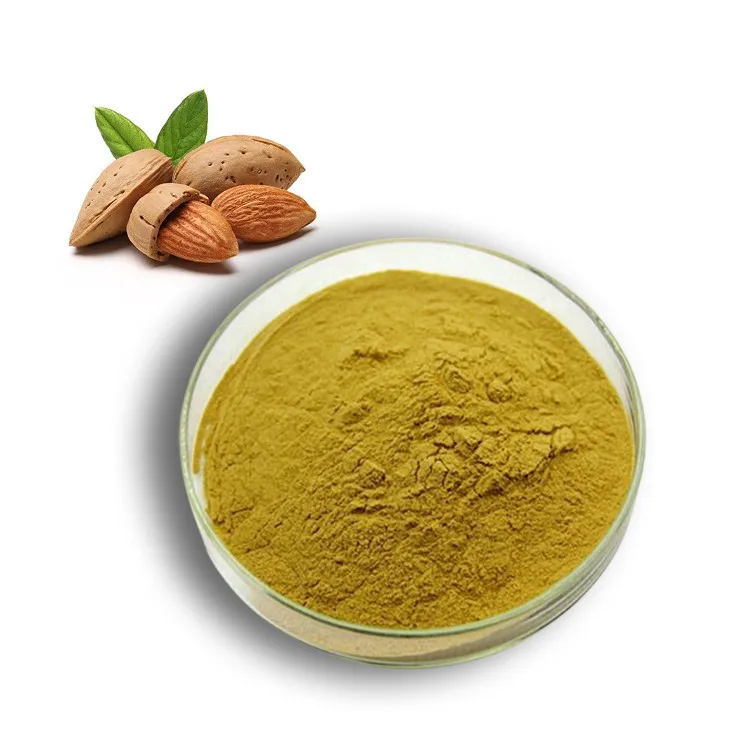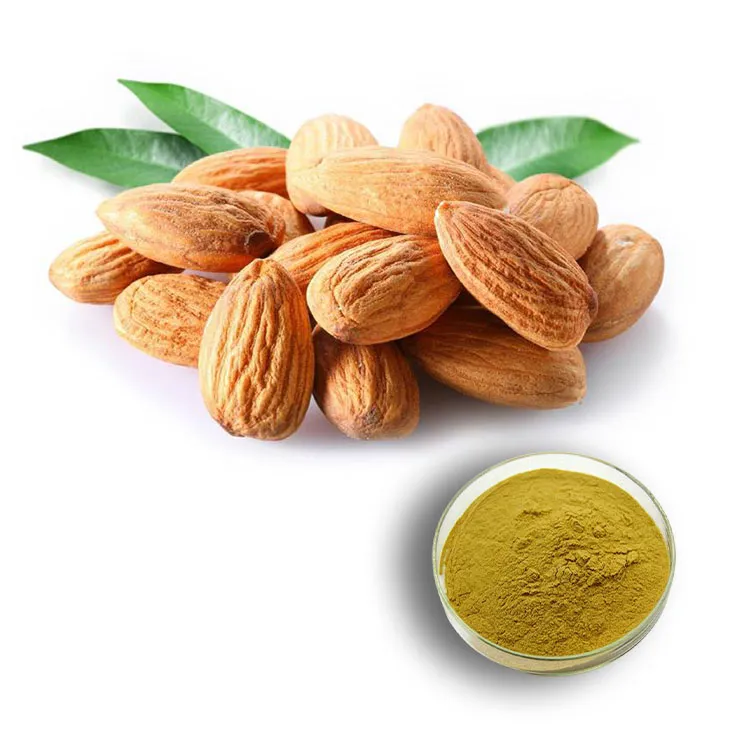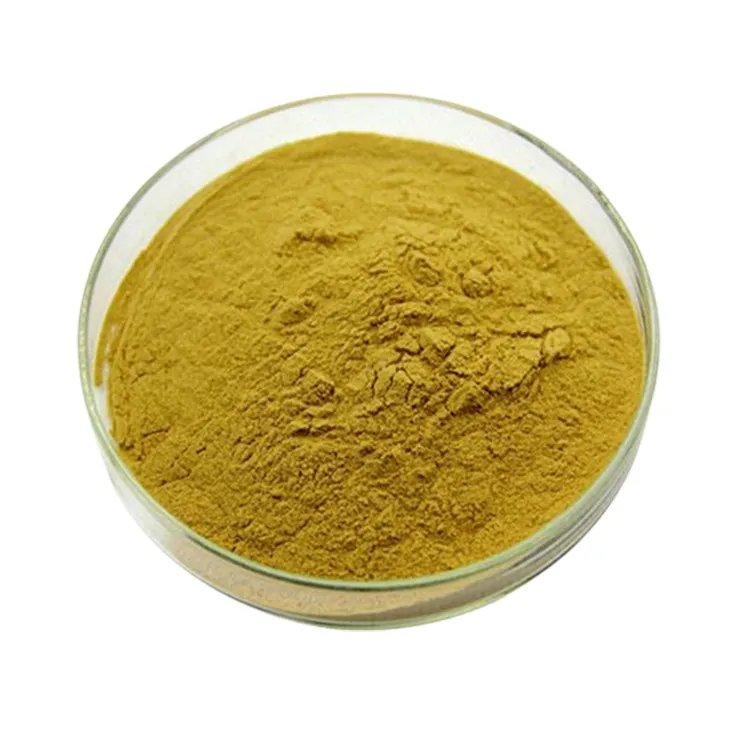- 0086-571-85302990
- sales@greenskybio.com
The process of extracting almond oil from almond extract powder.
2024-11-27

1. Introduction
Almond oil is highly valued for its various applications in the food, cosmetic, and pharmaceutical industries. Extracting almond oil from Almond Extract Powder offers a convenient and efficient way to obtain this valuable oil. Understanding the detailed process, including pretreatment, extraction methods, and purification steps, is crucial for obtaining high - quality almond oil. Each stage in the extraction process plays a significant role in determining the quality and yield of the final product.

2. Pretreatment of Almond Extract Powder
2.1. Particle Size Reduction
The Almond Extract Powder often needs to have its particle size reduced to increase the surface area available for extraction. This can be achieved through grinding or milling processes. By reducing the particle size, the contact between the powder and the extraction solvent is enhanced, which can lead to a more efficient extraction. For example, a fine - powder form of almond extract powder can be obtained using a ball mill. The resulting small particles expose more of the internal components of the powder to the extraction medium.
2.2. Moisture Adjustment
The moisture content of the almond extract powder has a significant impact on the extraction process. If the powder has too high a moisture content, it can lead to issues such as clumping and reduced efficiency of the extraction solvent. On the other hand, if the moisture content is too low, it may also affect the extraction yield. Moisture adjustment is typically carried out to bring the moisture content within an optimal range. This can be done by drying the powder in a controlled environment if the moisture is too high or by adding a small amount of moisture if it is too low. For instance, drying can be carried out in a low - temperature oven to gently remove excess moisture without damaging the components of the powder.

3. Extraction Methods
3.1. Solvent Extraction
- Selection of Solvent: The choice of solvent is crucial in solvent extraction. Common solvents used for almond oil extraction from almond extract powder include hexane, ethanol, and supercritical carbon dioxide. Hexane is a non - polar solvent that is very effective at dissolving the lipid components of the almond extract powder. Ethanol, on the other hand, is a polar solvent and can also be used, especially when a more "natural" extraction process is desired, as it is less toxic compared to hexane. Supercritical carbon dioxide is a relatively new and "green" option. It has the advantage of being non - toxic, non - flammable, and can be easily removed from the final product. For example, in the case of hexane extraction, hexane is added to the pretreated almond extract powder in a suitable ratio, usually in a Soxhlet extractor for a continuous extraction process.
- Extraction Process: Once the solvent is added, the mixture is stirred or agitated to ensure proper mixing. The extraction time and temperature also play important roles. For hexane extraction, a relatively low - temperature environment (around 40 - 60°C) is often used to avoid degradation of the almond oil components. The extraction may last for several hours to ensure maximum extraction yield. In the case of supercritical carbon dioxide extraction, specific pressure and temperature conditions need to be maintained. For example, the pressure may be set at around 10 - 50 MPa and the temperature at 30 - 60°C to achieve the supercritical state of carbon dioxide and efficient extraction of almond oil.
- Separation of Solvent - Oil Mixture: After the extraction is complete, the solvent - oil mixture needs to be separated from the remaining solid residue. This can be done through filtration or centrifugation. Filtration using filter paper or a Buchner funnel can effectively remove the solid particles, leaving behind the solvent - oil mixture. Centrifugation can also be used to accelerate the separation process, especially when dealing with larger volumes of the mixture.
3.2. Press Extraction
- Preparation for Pressing: In press extraction, the pretreated almond extract powder is first formed into a suitable form for pressing. This may involve compacting the powder into pellets or cakes. This step helps to increase the density of the material and make it easier to apply pressure for oil extraction.
- Pressing Operation: Mechanical presses are then used to apply pressure to the almond extract powder. The pressure forces the oil out of the powder. There are different types of presses available, such as hydraulic presses and screw presses. Hydraulic presses can apply high and consistent pressure, which is beneficial for obtaining a good extraction yield. Screw presses, on the other hand, are more suitable for continuous extraction processes. The pressure applied during the pressing operation should be carefully controlled to avoid over - pressing, which may lead to the extraction of unwanted components or damage to the oil quality.
- Collection of the Extracted Oil: The extracted almond oil is then collected. It may contain some small solid particles or impurities at this stage, which will need to be further purified in subsequent steps.

4. Purification Steps
4.1. Degumming
Almond oil obtained from extraction may contain gums, which are mainly phospholipids. Degumming is the process of removing these gums. One common method is to add a small amount of water to the oil and heat the mixture. The gums will then form a sludge that can be separated from the oil by centrifugation or filtration. For example, about 1 - 3% water is added to the almond oil and the mixture is heated to around 60 - 80°C. The phospholipids will hydrate and form a separate phase that can be easily removed, thus improving the clarity and stability of the almond oil.
4.2. Neutralization
During extraction, the almond oil may become acidic due to the presence of free fatty acids. Neutralization is carried out to reduce the acidity of the oil. This is typically done by adding an alkali, such as sodium hydroxide or potassium hydroxide. The alkali reacts with the free fatty acids to form soap, which can be removed by subsequent washing with water. The amount of alkali added needs to be carefully controlled to avoid over - neutralization, which may lead to the formation of emulsions or the loss of some beneficial components in the oil. For example, the concentration of the alkali solution and the reaction time are carefully monitored during the neutralization process.
4.3. Bleaching
Almond oil may have a slightly yellowish color due to the presence of pigments. Bleaching is used to remove these pigments and improve the color of the oil. Activated carbon or bleaching earths are commonly used as bleaching agents. The oil is mixed with the bleaching agent and heated under vacuum. The bleaching agent adsorbs the pigments, and after a certain period of time, the bleaching agent is removed by filtration. For instance, the oil is mixed with a suitable amount of activated carbon (about 1 - 5% of the oil volume) and heated to around 80 - 100°C under vacuum for about 30 - 60 minutes. This process not only improves the appearance of the almond oil but also helps to remove some other impurities that may be adsorbed by the bleaching agent.
4.4. Deodorization
Even after the previous purification steps, the almond oil may still have some odors, either from the extraction process or from the natural components of the almonds. Deodorization is the final purification step to remove these odors. This is typically carried out at high temperatures (around 180 - 250°C) and under high vacuum. The high temperature and vacuum conditions cause the volatile compounds responsible for the odors to be removed. Additionally, steam may be injected during the deodorization process to help strip away the odorous compounds. After deodorization, the almond oil has a neutral odor and a high level of purity, making it suitable for various applications in the food, cosmetic, and pharmaceutical industries.

5. Significance of Each Stage in the Extraction Process
5.1. Pretreatment
The pretreatment stage is significant as it prepares the almond extract powder for efficient extraction. By reducing the particle size, more of the internal oil - containing components are exposed to the extraction medium, increasing the potential yield. Adjusting the moisture content ensures that the extraction process is not hindered by issues such as clumping or inefficiency due to improper moisture levels. These steps lay the foundation for a successful extraction process.
5.2. Extraction
The extraction method determines the efficiency and quality of the almond oil obtained. Solvent extraction offers a high - yield method with the ability to choose solvents based on different requirements. Press extraction, on the other hand, is a more "mechanical" and potentially "greener" option as it does not involve the use of solvents. The choice between these methods depends on factors such as cost, desired quality, and scale of production. A well - executed extraction process ensures that a sufficient amount of high - quality almond oil is obtained from the almond extract powder.
5.2. Purification
The purification steps are essential for obtaining a high - quality almond oil suitable for various applications. Degumming improves the stability of the oil by removing gums, neutralization reduces acidity, bleaching enhances the color, and deodorization gives the oil a neutral and pleasant odor. Without these purification steps, the almond oil may have poor quality characteristics such as instability, off - flavors, and an unappealing color, which would limit its usability in different industries.
6. Conclusion
Extracting almond oil from almond extract powder involves a multi - step process that includes pretreatment, extraction, and purification. Each stage plays a crucial role in obtaining high - quality almond oil. By carefully controlling and optimizing each step, from particle size reduction and moisture adjustment in pretreatment, to choosing the right extraction method and effectively purifying the extracted oil, it is possible to produce almond oil that meets the high standards required for use in the food, cosmetic, and pharmaceutical industries.
FAQ:
What are the common pretreatment methods for almond extract powder before extracting almond oil?
Pretreatment usually involves steps like drying to reduce moisture content, which helps in better extraction. Grinding the powder to a finer consistency can also increase the surface area available for extraction. Sometimes, sieving may be done to remove any large particles or impurities that could interfere with the extraction process.
What are the main extraction methods for almond oil from almond extract powder?
Common extraction methods include solvent extraction, where a suitable solvent like hexane is often used. Supercritical fluid extraction is also an option, which can offer advantages in terms of purity. Another method is cold - press extraction, which is more natural but may have a lower yield compared to solvent - based methods.
How does purification of the extracted almond oil take place?
After extraction, purification can involve steps such as filtration to remove any remaining solid particles. Distillation may be used to separate the solvent (if solvent extraction was used) from the oil. Additionally, degumming can be carried out to remove phospholipids and other gums present in the oil, improving its quality.
Why is pretreatment important in the process of extracting almond oil from almond extract powder?
Pretreatment is crucial as it prepares the almond extract powder for efficient extraction. By drying, we prevent spoilage during extraction. Grinding enhances the contact between the powder and the extraction medium. Removing impurities through sieving ensures that the final oil is of higher quality and purity.
What factors can affect the quality of almond oil during the extraction process?
Several factors can influence the quality. The quality of the almond extract powder itself, such as its freshness and purity, is important. The extraction method used, with some methods being more gentle and less likely to cause degradation of the oil. Also, the purification steps and how thoroughly they are carried out can impact the final quality of the almond oil.
Related literature
- Almond Oil Extraction: Traditional and Modern Methods"
- "Optimizing the Purification Steps in Almond Oil Production from Almond Extract"
- "The Significance of Pretreatment in Almond Oil Extraction from Powdered Almonds"
- ▶ Hesperidin
- ▶ citrus bioflavonoids
- ▶ plant extract
- ▶ lycopene
- ▶ Diosmin
- ▶ Grape seed extract
- ▶ Sea buckthorn Juice Powder
- ▶ Beetroot powder
- ▶ Hops Extract
- ▶ Artichoke Extract
- ▶ Reishi mushroom extract
- ▶ Astaxanthin
- ▶ Green Tea Extract
- ▶ Curcumin Extract
- ▶ Horse Chestnut Extract
- ▶ Other Problems
- ▶ Boswellia Serrata Extract
- ▶ Resveratrol Extract
- ▶ Marigold Extract
- ▶ Grape Leaf Extract
- ▶ blog3
- ▶ blog4
-
The best organic chia seed powder.
2024-11-27
-
The extraction process of Maca extract.
2024-11-27
-
Organic Motherwort Extract Powder Supplier.
2024-11-27
-
The Pure Vitamin K2 Most Worth Buying.
2024-11-27
-
Chinese Hawthorn Extract Powder Suppliers.
2024-11-27
-
The best Tongkat Ali extract in nature.
2024-11-27
-
Artichoke Leaf Extract
2024-11-27
-
Acerola Juice Powder
2024-11-27
-
Honeysuckle Pollen
2024-11-27
-
Black Pepper Extract
2024-11-27
-
White Willow Bark Extract
2024-11-27
-
Dandelion Leaf Extract
2024-11-27
-
Calendula Extract
2024-11-27
-
Cranberry Extract
2024-11-27
-
Oat Straw Extract Powder
2024-11-27
-
Kidney Bean Extract
2024-11-27





















